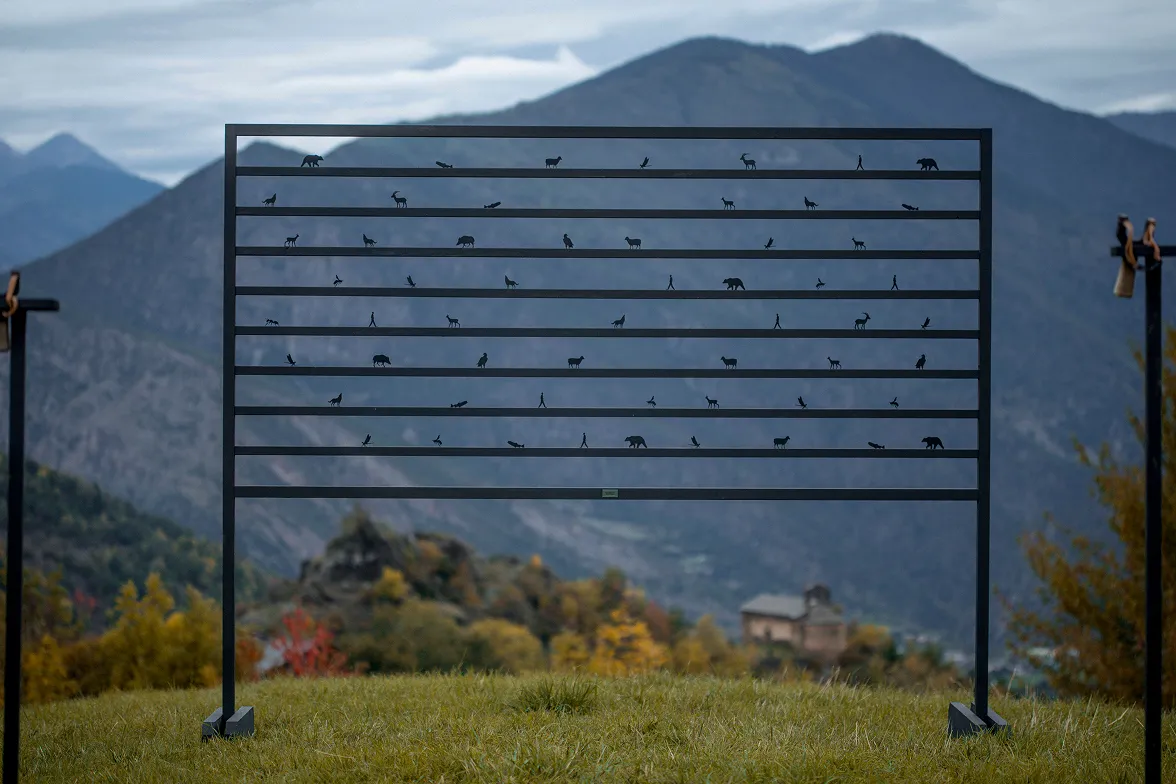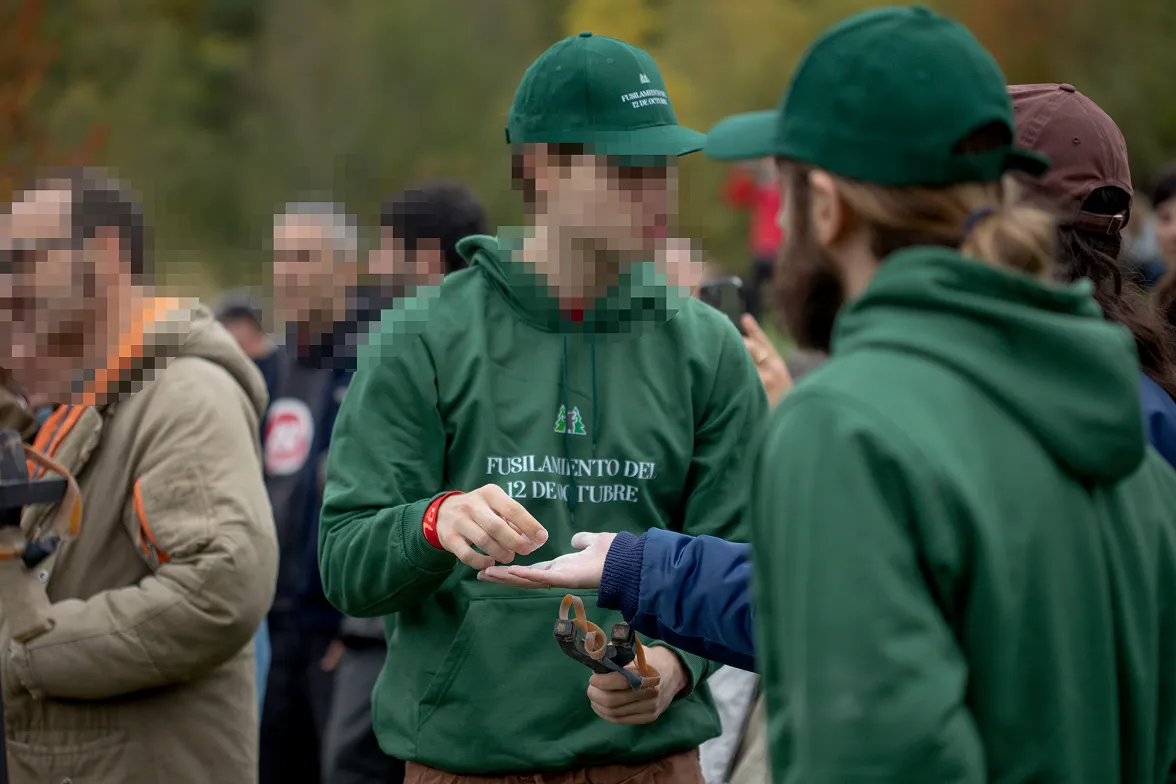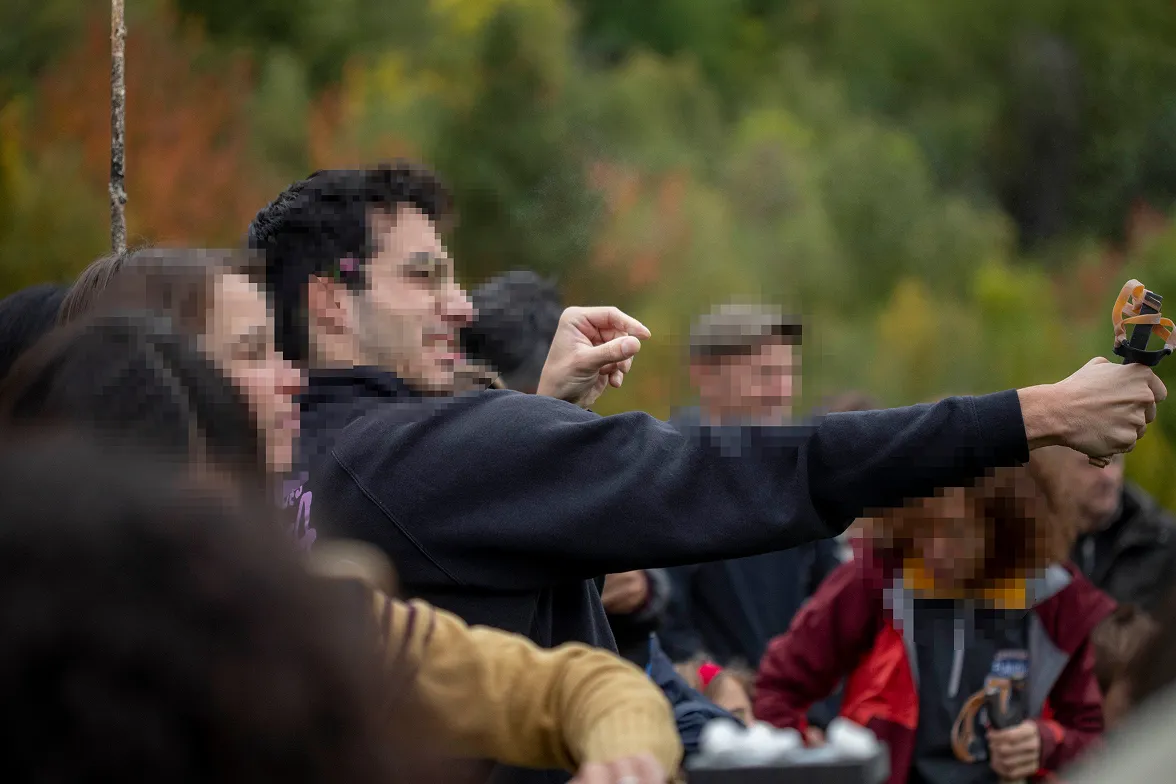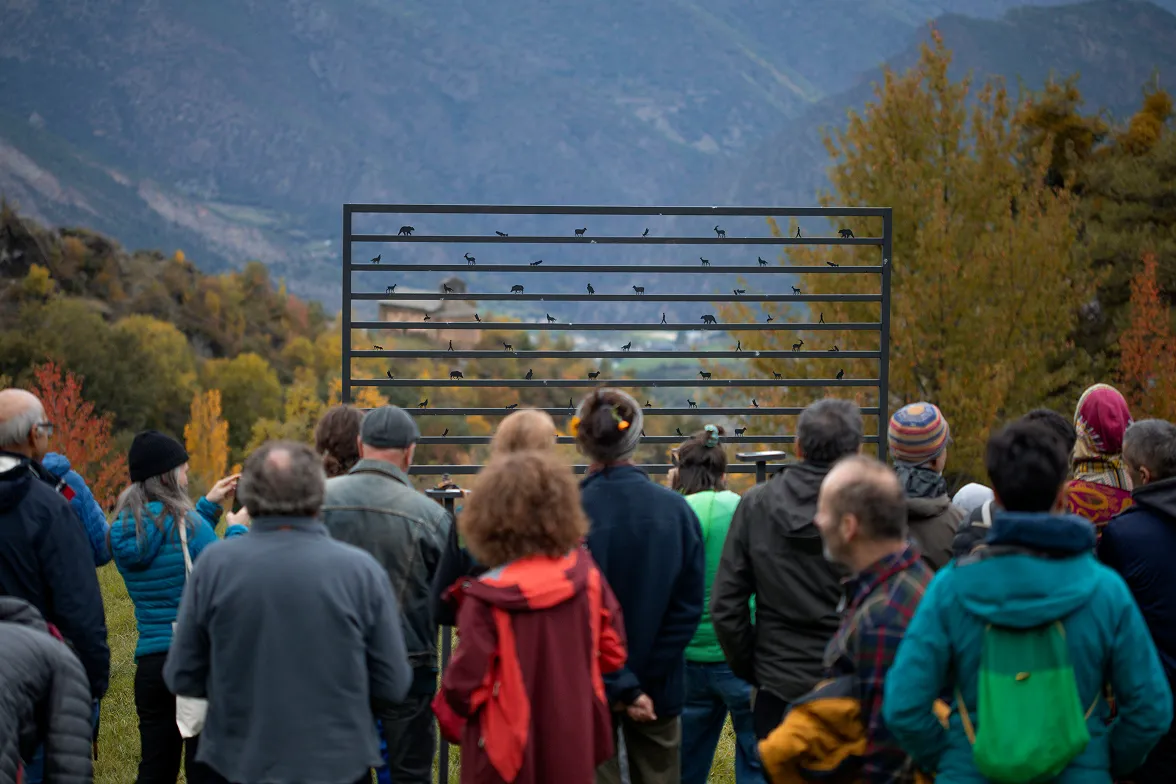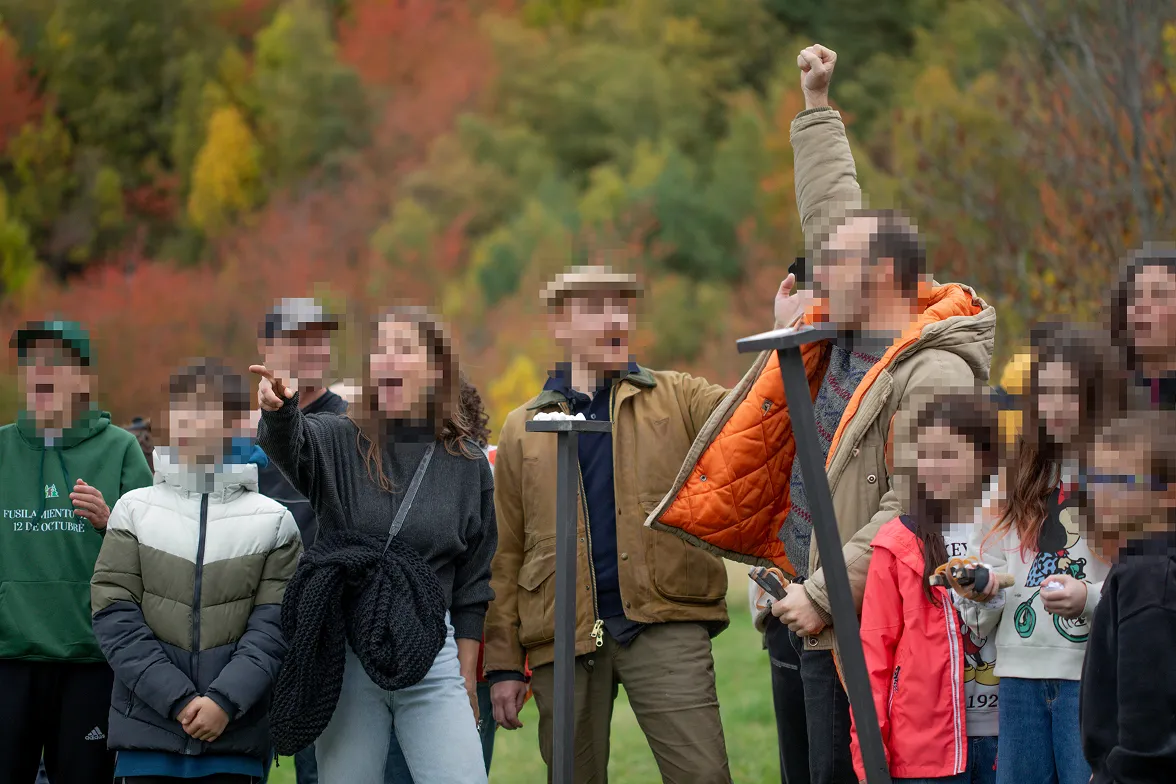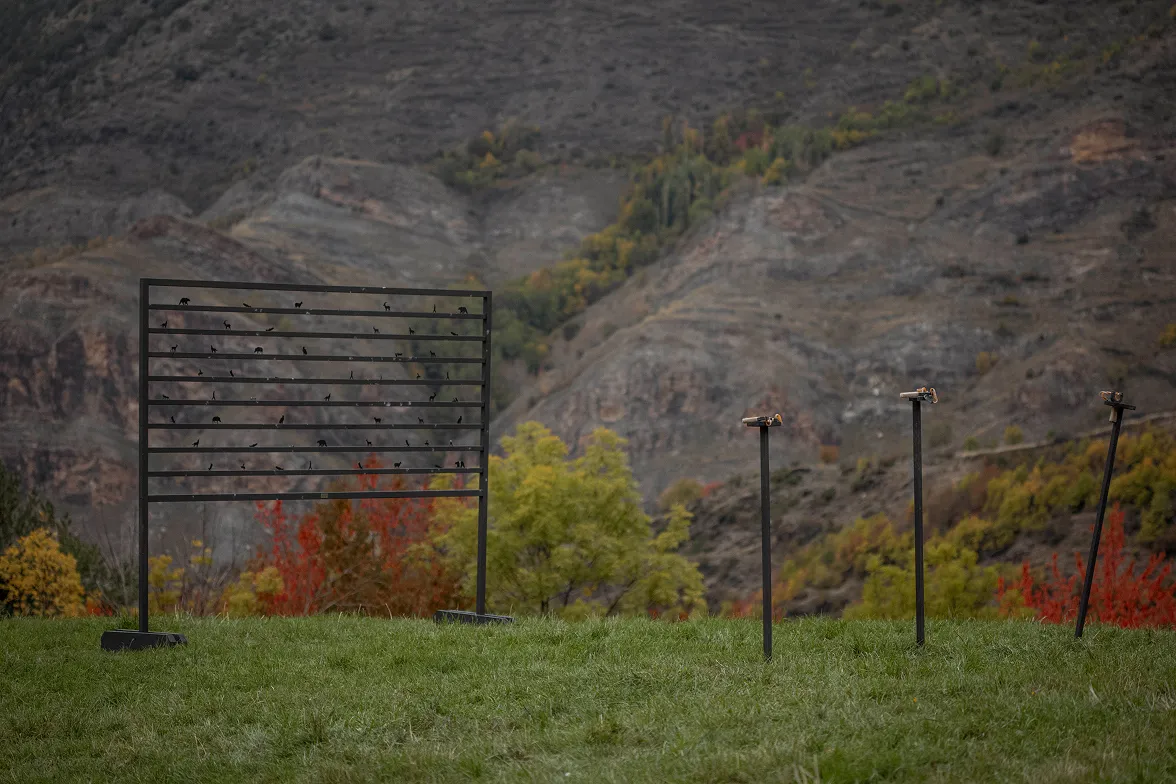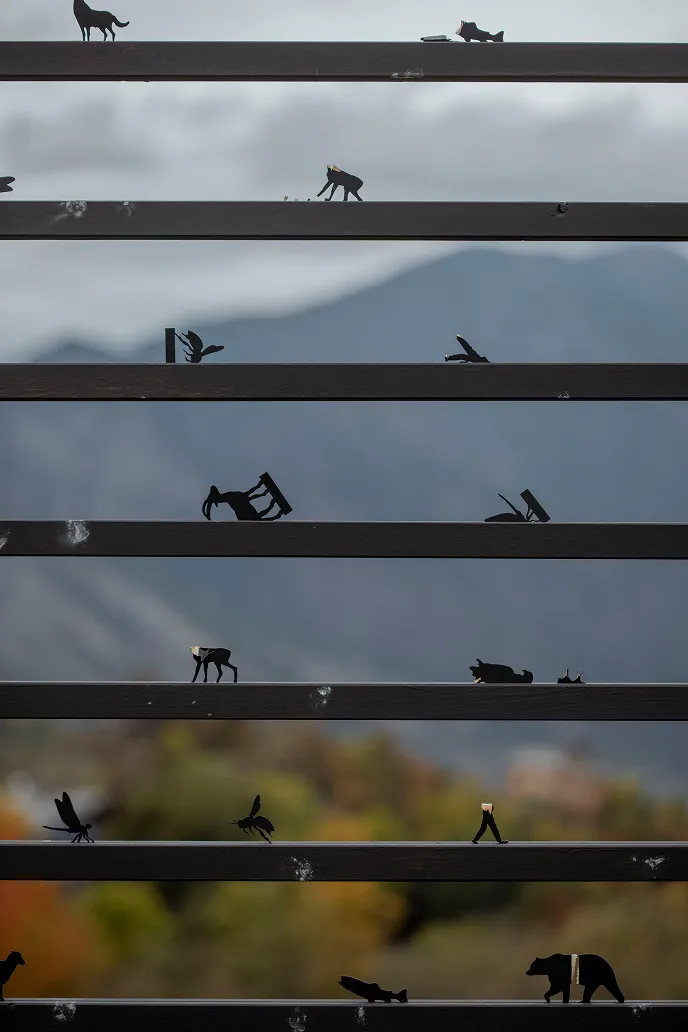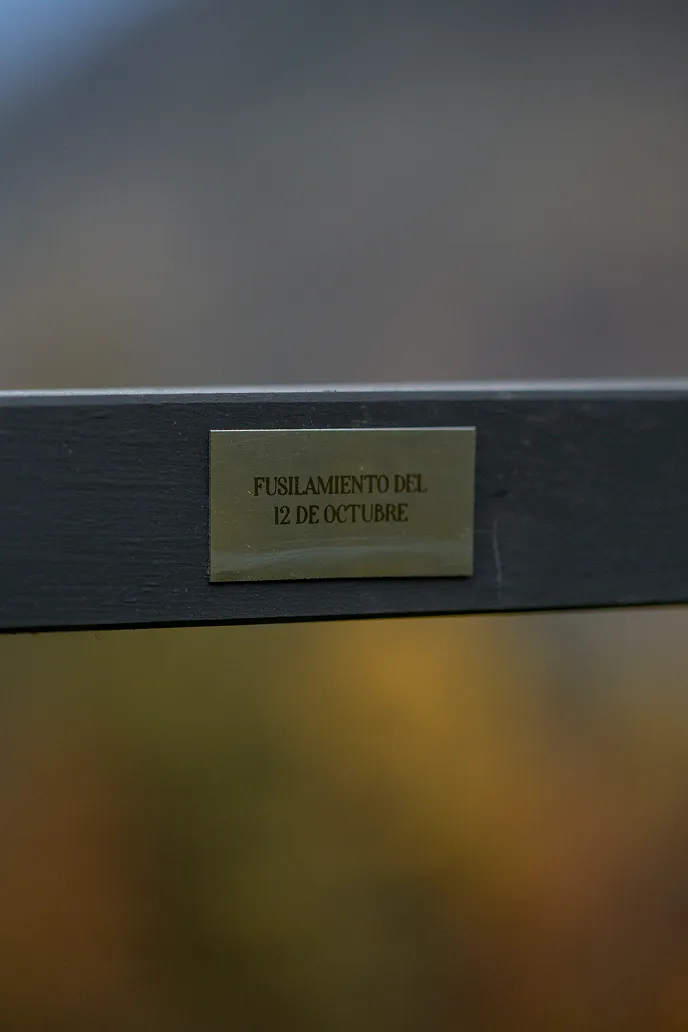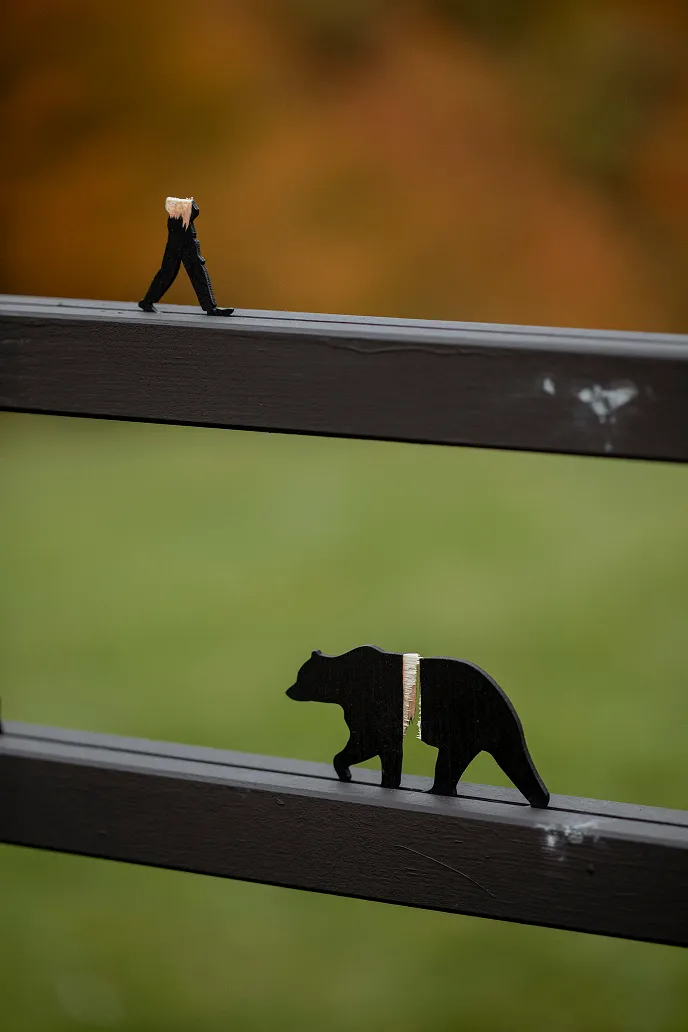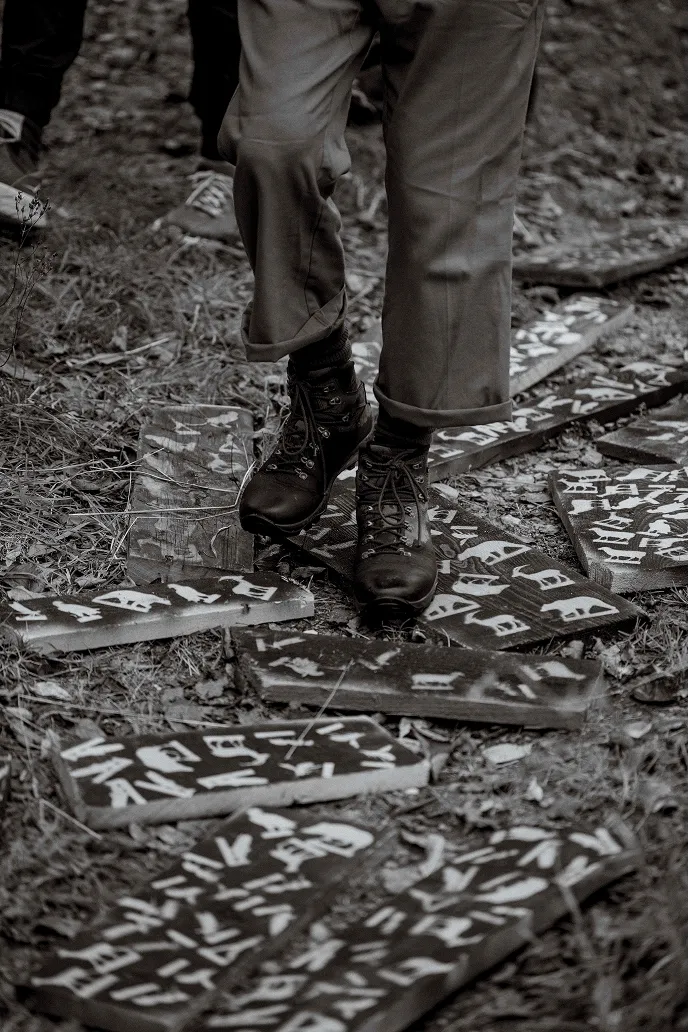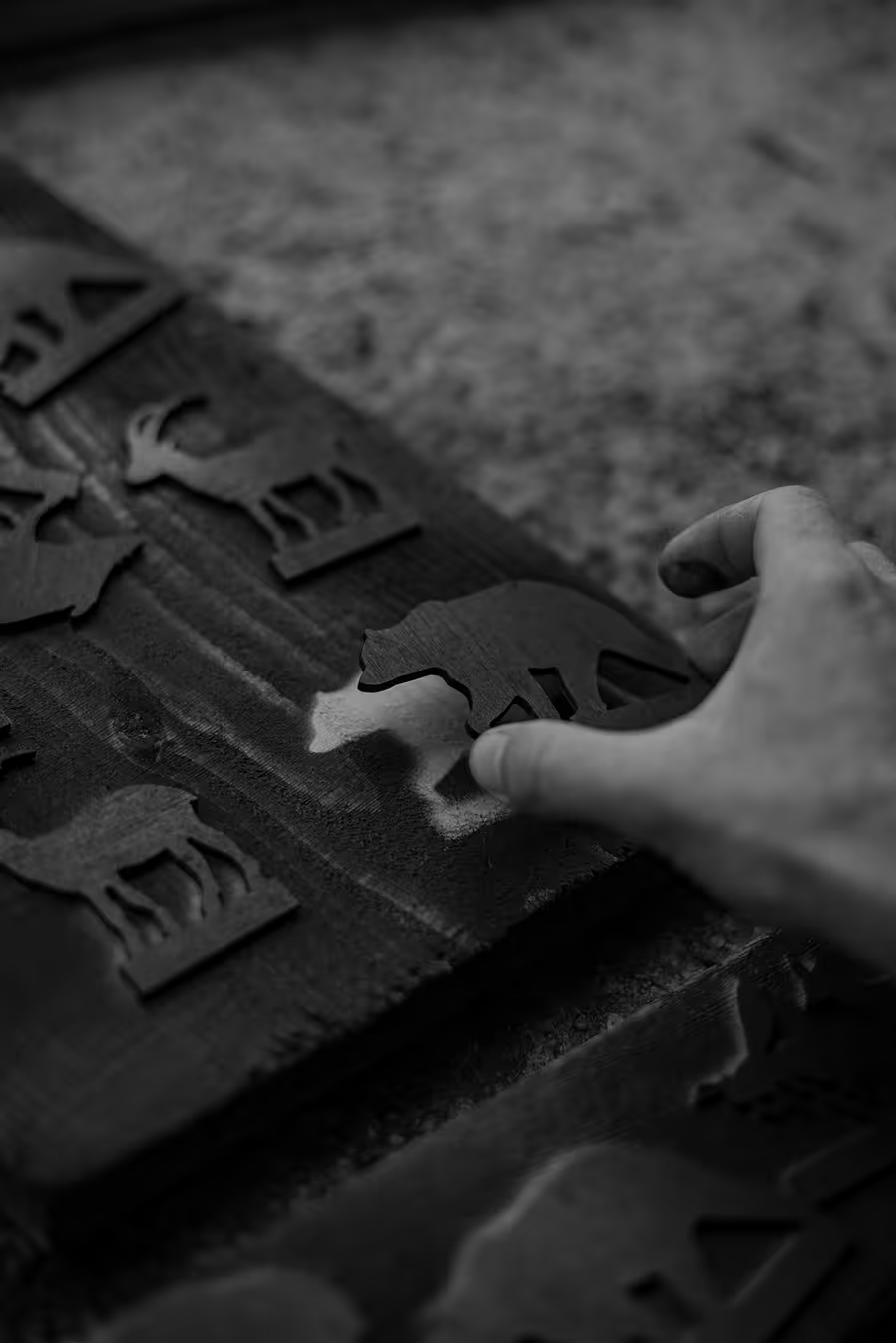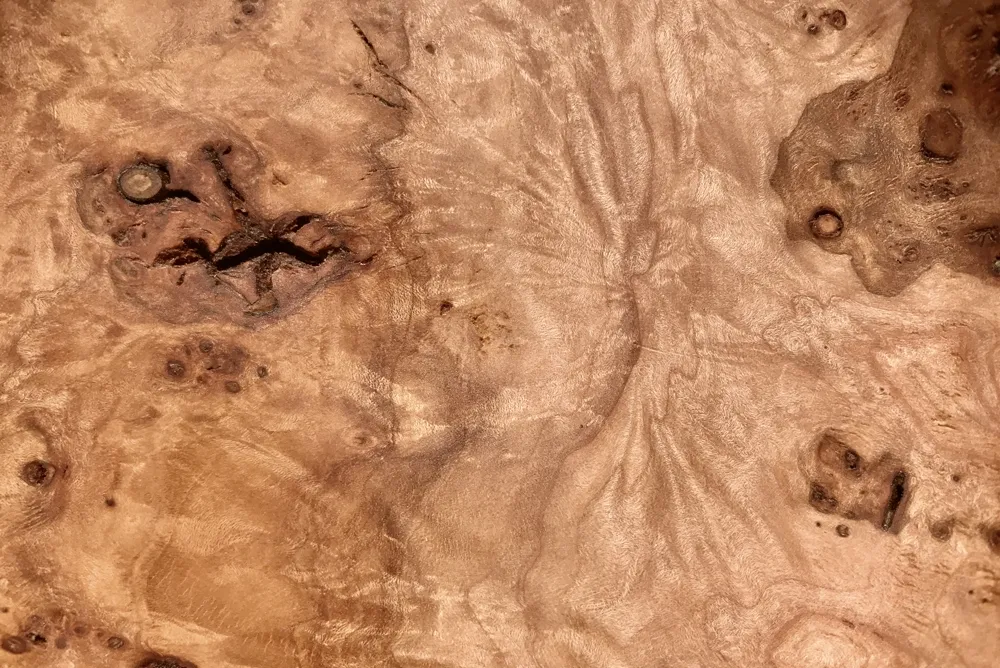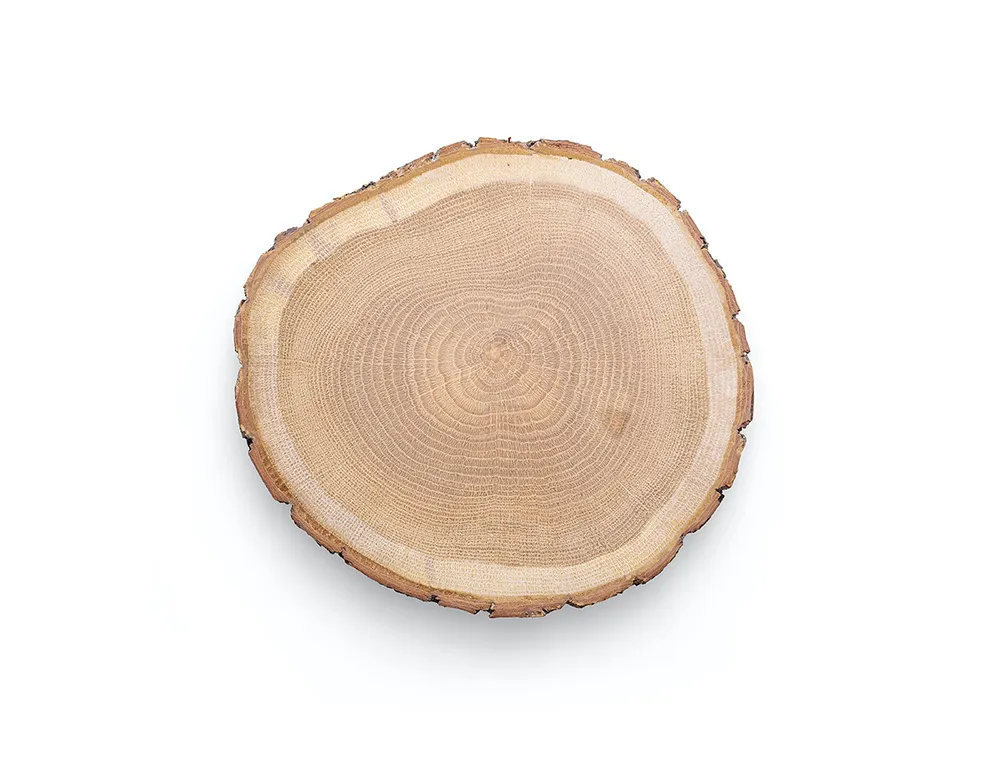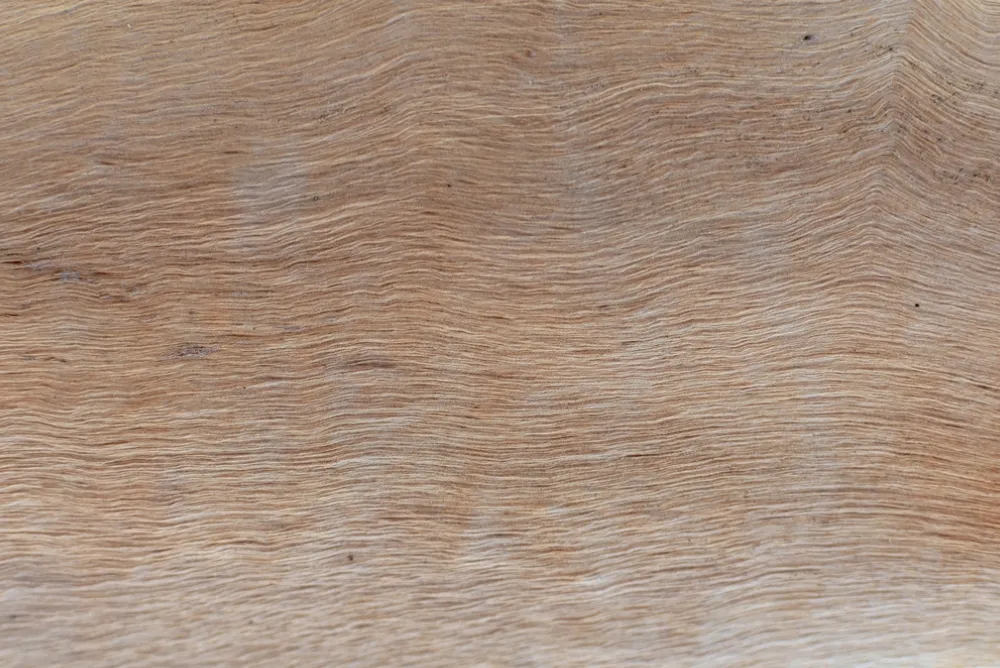Execution of October 12
In the heart of the Catalan Pyrenees, in the Farrera valley, Execution of October 12th unfolds a scene loaded with symbolism, violence, and formal irony, juxtaposing a playful mechanism with a representation of extermination. Beneath the harmless appearance of a fairground stall, the work proposes a participatory experience that directly questions the colonial, extractivist, and anthropocentric logics that have historically shaped the relationship between civilization and nature.
The title explicitly alludes to Día de la Hispanidad (Hispanic Day), resignifying October 12th—the date on which the performance took place—not as a national celebration, but as the foundational act of systematic violence: conquest, appropriation, and subjugation of bodies, territories, and species.
In this installation, the viewer faces a shooting gallery composed of silhouettes of humans and animals. In front of them, a row of mechanical slingshots with triggers—activated by inserting a ticket resembling a banknote—turns the audience into direct participants in a symbolic "shooting." The work thus poses an essential question: Which lives are expendable under the modern narrative of progress?
Beyond the representation of violence, the participatory structure of the piece transforms the spectator into an active agent of it. The silhouettes, organized in sections, configure a fictional landscape where biodiversity has been reduced to a target: an ecosystem turned into spectacle. The piece subverts anthropocentric hierarchy by exposing how conservation can also operate as a form of control and violence.
The work takes as its starting point the real situation of the brown bear in the Catalan Pyrenees. Since the 1990s, its reintroduction has generated tensions with economic sectors such as rural tourism and livestock farming. In this context, the figure of the bear evolves into an ambivalent symbol: an emblem of resilient nature, but also a target of discourse that positions it as a threat.
The shooting gallery represents twelve species that form the brown bear’s direct trophic chain. The symbolic elimination of this predator in the installation implies, in turn, the overpopulation of other species and the ecosystem’s imbalance. Therefore, each shot activates an ecological reading: the life of one species is inevitably intertwined with that of others. At the top of this chain stands the human being, represented as the predator of predators, capable of altering or annihilating the entire system.
Execution of October 12th evokes the Derrida’s notion of sovereign power: a power that operates not only through direct violence but also through invisible structures of control and representation. Here, the sovereign is not an individual but a system that shoots from a distance, deciding which lives deserve protection and which can be sacrificed.
In this way, the piece functions as a device for direct participation. The audience, drawn in by the accessible fairground format, engages spontaneously and enthusiastically. The act of aiming and shooting triggers an immediate reaction—a mix of triumph, surprise, and celebration upon hitting the target—exposing how a playful gesture can camouflage deeply naturalized forms of violence.

.webp)
